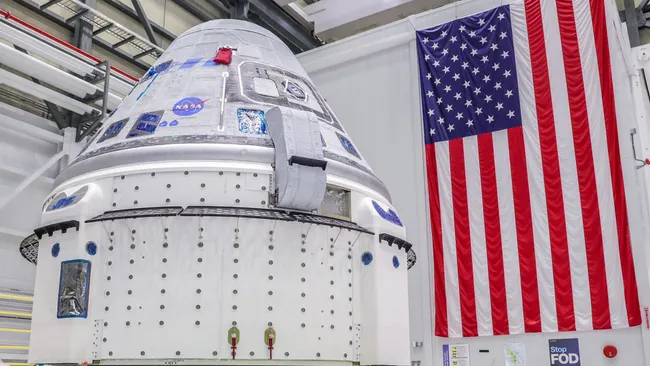“Boeing Starliner, crewed space launch, NASA astronauts, International Space Station, commercial space travel, United Launch Alliance, Atlas V rocket, space exploration, Crew Flight Test, space mission”
“Discover Boeing’s Starliner spacecraft as it prepares for its historic first crewed mission on May 6. Launching with NASA astronauts aboard, Starliner will head to the International Space Station on an Atlas V rocket from Cape Canaveral. Explore the significance of this mission, the challenges overcome, and what this milestone means for the future of commercial space travel.”

Boeing is set to mark a significant milestone in commercial space travel with its first-ever crewed launch of the Starliner spacecraft, scheduled for May 6. This event comes after an extensive review process involving NASA and Boeing, which concluded successfully with the flight readiness review (FRR) for the Crew Flight Test (CFT). The mission aims to transport NASA astronauts Suni Williams and Butch Wilmore to the International Space Station (ISS).
During the recent FRR, no major concerns were identified, clearing the path for the mission as planned. NASA Associate Administrator Jim Free expressed confidence in the readiness and preparation of the teams involved. Despite minor pending tasks, the mission is set to launch at 10:34 PM Eastern Daylight Time from Florida’s Cape Canaveral Space Force Station.
The launch is noteworthy not only for its payload but also for its historical significance. Starliner will be launched atop a United Launch Alliance Atlas V rocket, marking the first crewed launch using this rocket type and the first in the Atlas rocket family since the Mercury program in the early 1960s. This is a testament to the enduring legacy and evolving capabilities of space launch vehicles.
Previously, Starliner embarked on two uncrewed test flights. The first in December 2019 did not meet all its objectives due to multiple issues that prevented a rendezvous with the ISS. However, a subsequent uncrewed mission in May 2022 successfully demonstrated the capsule’s capabilities by docking with the ISS. Despite these challenges, each step has been crucial in preparing Starliner for its first crewed mission.
The path to this upcoming launch has not been smooth. Originally scheduled for July 2023, the mission faced delays due to technical challenges, including concerns with Starliner’s main parachutes and issues with flammable materials used in the capsule’s construction. These problems required thorough investigation and resolution, pushing the launch to its current date. The team continues to address minor issues, such as replacing a valve at the launch pad and analyzing contingency scenarios for the mission, but these are not expected to further delay the launch.
Starliner’s journey to the ISS will not only serve as a crucial test of its design and functionality but also reinforce the importance of having multiple reliable crew transport vehicles. This redundancy is vital for ensuring continuous human presence on the ISS and providing a backup for crew rescue and other critical scenarios.
Boeing’s entry into crewed space missions is part of NASA’s broader Commercial Crew Program (CCP), which also includes SpaceX. SpaceX has already conducted multiple crewed missions to the ISS using its Dragon capsule, demonstrating the success and reliability of private companies in human spaceflight. In 2020, SpaceX successfully carried out its CFT-equivalent mission, Demo-2, which transported astronauts to the ISS for a two-month stay.
The addition of Boeing’s Starliner to the cadre of available crewed spacecraft is a strategic move to enhance the operational capabilities of NASA and its international partners. This diversity in crew transport options ensures not only competitive innovation within the aerospace industry but also improves the robustness and safety of space travel.
As Starliner prepares for its landmark journey, it represents more than just a technological achievement; it is a pivotal moment in the ongoing collaboration between NASA and private sector partners like Boeing. This partnership aims to expand human presence in space and opens up new possibilities for exploration, research, and potentially commercial ventures in the near future.
This upcoming mission underscores the importance of rigorous testing, resilience in overcoming challenges, and the critical role of innovation in advancing the frontiers of space exploration. As we look forward to May 6, the anticipation surrounding Starliner’s crewed test flight reflects a collective hope and excitement for the next chapter in human spaceflight.
Read More-
- NASA Fermi Reveals the Universe in New E-Book
- NASA New Plan for Mars Sample Return Mission
- National Space Technology Development Priorities
- NASA Pioneering Airborne Missions: Advancing Earth and Climate Science









